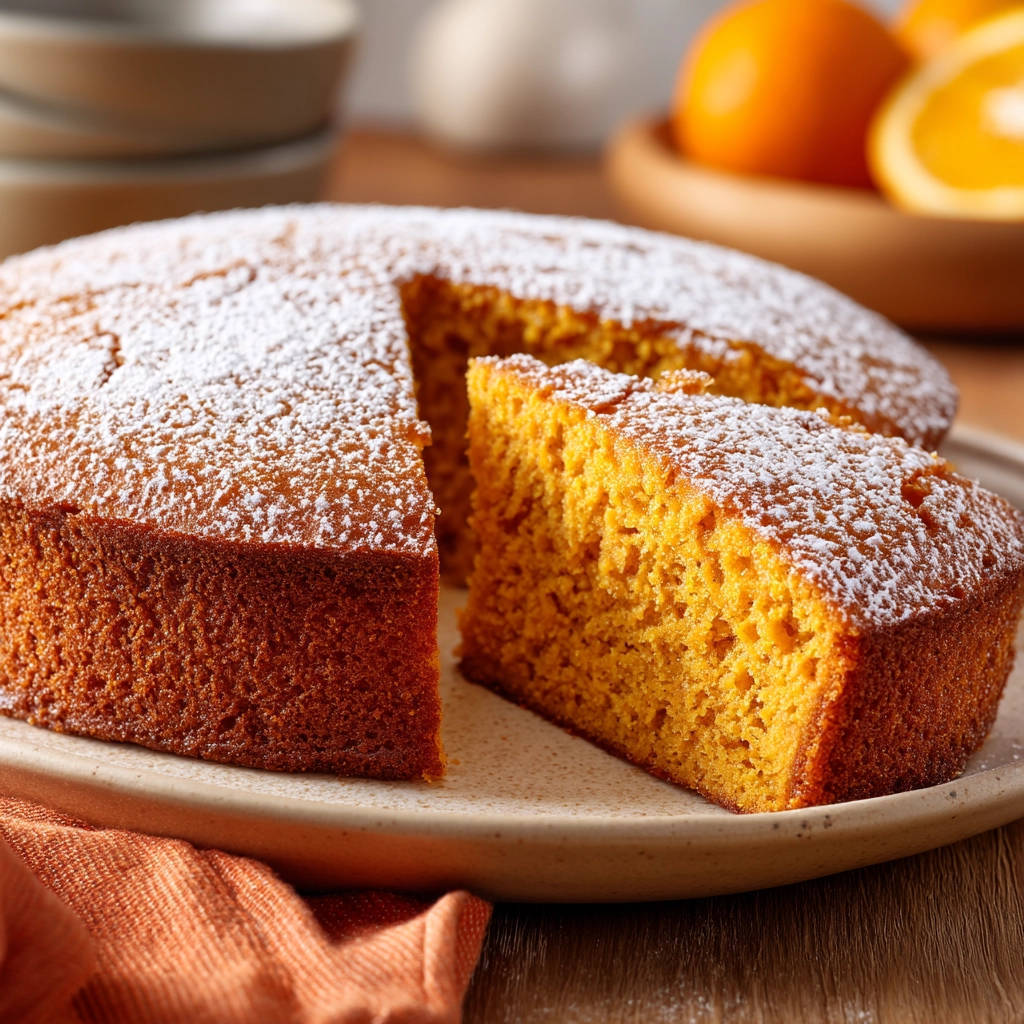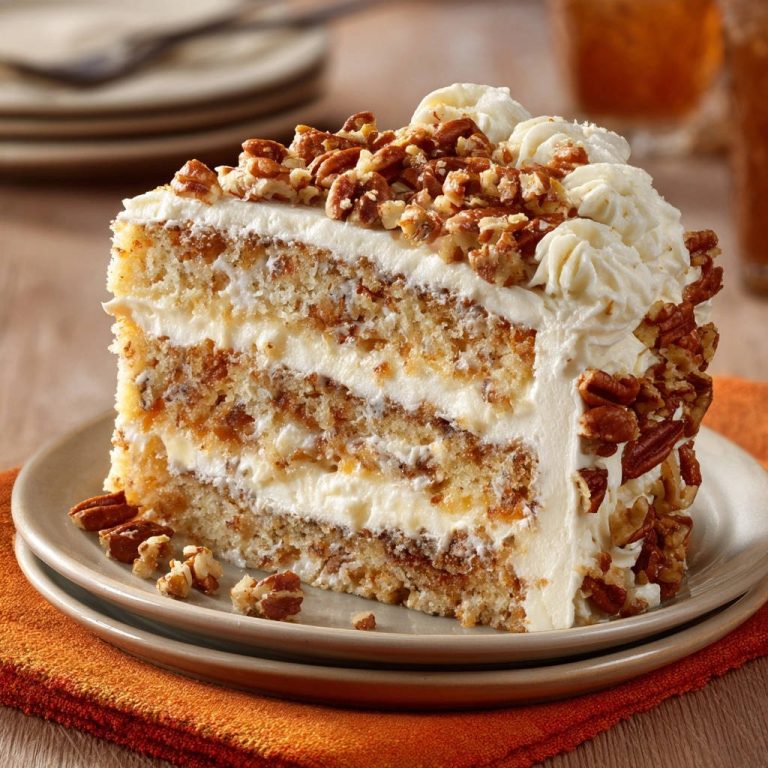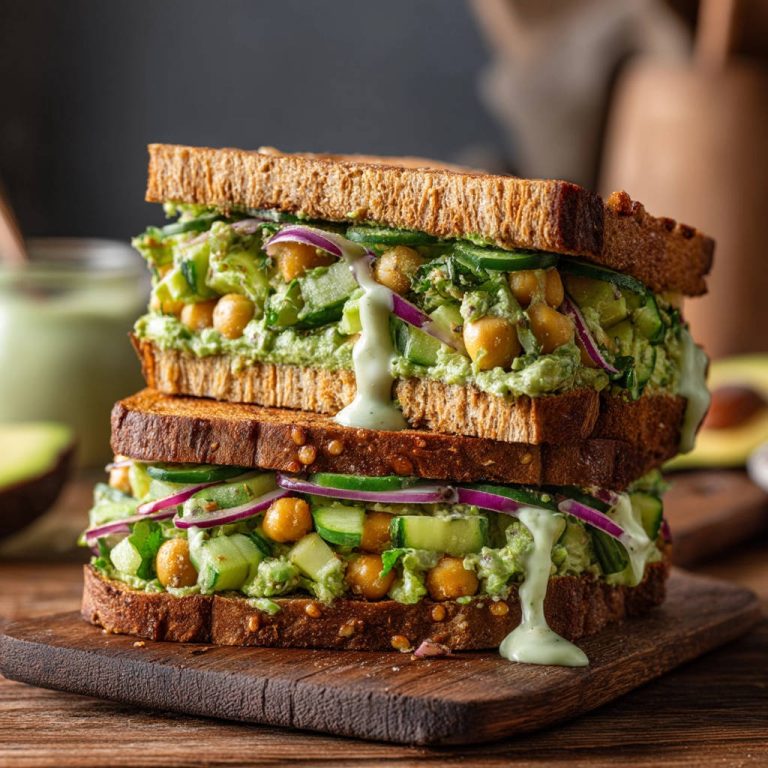There’s truly nothing quite as frustrating as spending time baking a beautiful cake, only to slice into it and discover a dry, crumbly texture. We’ve all been there, right? For years, I struggled with simple cakes, yearning for that perfectly moist crumb that just melts in your mouth. But then, I stumbled upon a little baking secret that changed everything. It’s not complicated, it’s not fancy, but it makes all the difference in the world! This Easy Orange Cake is the delicious proof – it comes out wonderfully tender and bursting with fresh citrus flavor every single time, thanks to that simple technique.
If you’re looking for a reliable, crowd-pleasing cake that isn’t overly complicated but delivers maximum satisfaction, this Easy Orange Cake recipe is about to become your new best friend. Forget dry disappointments; moist, flavorful success is just a few simple steps away.
Reasons This Easy Orange Cake is a Keeper
Why should this be your go-to recipe when a craving for something sweet and citrusy strikes? Let me count the ways:
- Guaranteed Moisture: That little secret I mentioned? It truly works! Say goodbye to dry cakes forever. This recipe ensures a beautifully moist texture.
- Simple & Straightforward: You don’t need any fancy equipment or advanced techniques. If you can mix ingredients in bowls, you can make this cake.
- Bright, Fresh Flavor: The combination of fresh orange juice and zest provides a vibrant citrus punch that feels both comforting and uplifting.
- Quick Prep: With just 15 minutes of prep time, you can have this cake batter ready for the oven in a flash.
- Versatile: Delicious on its own with a dusting of powdered sugar, but also a fantastic base for glazes or simple toppings.
Gathering Your Ingredients for This Moist Orange Cake
One of the beautiful things about this recipe is that it relies on simple, pantry-friendly ingredients that come together to create something truly special. There are no exotic components here, just everyday staples ready to be transformed into a delightful citrus cake.
The magic happens when we combine these everyday items thoughtfully. We start with the foundational dry ingredients – all-purpose flour provides the structure, while baking powder is our leavening agent, helping the cake rise and become tender. A touch of salt balances the sweetness and enhances all the flavors.
For the wet components, we move away from traditional butter in favor of vegetable oil. This is a key part of our moisture secret! Oil coats the flour proteins more effectively than melted butter, inhibiting gluten development and resulting in a softer, more tender crumb. Granulated sugar sweetens the cake, of course, but also contributes to moisture retention. Large eggs bind everything together and add richness, and vanilla extract provides that essential warm background note that complements citrus beautifully.
Now, for the real moisture heroes and the stars of the flavor show: buttermilk (or plain yogurt) and fresh orange juice. The acidity in buttermilk or yogurt reacts with the baking powder to give an extra lift, while also breaking down gluten strands for tenderness. Combined with the pure moisture of the orange juice, these liquids hydrate the batter perfectly. And let’s not forget the vibrant fresh orange zest! It’s where most of the orange flavor resides, infusing the cake with bright, aromatic oils. A final dusting of powdered sugar adds a simple, elegant finish.
Here’s your simple list of ingredients:
- 2 cups all-purpose flour
- 1 and 1/2 teaspoons baking powder
- 1/2 teaspoon salt
- 1 cup granulated sugar
- 1/2 cup vegetable oil
- 2 large eggs
- 1 teaspoon vanilla extract
- 1/2 cup buttermilk or plain yogurt
- 1/4 cup fresh orange juice
- Zest of 1 large orange
- Powdered sugar, for dusting
Using fresh orange juice and zest really makes a difference in the intensity of the orange flavor. Choose a good quality orange for the best results!
Crafting Your Moist Orange Cake: Step-by-Step
Ready to bake? This process is designed to be easy and efficient, focusing on techniques that maximize flavor and, most importantly, moisture. Let’s walk through it together, paying attention to those little details that make a big impact.
Before you begin mixing, gather all your ingredients and have them measured out. Bringing ingredients like eggs and buttermilk to room temperature often helps them incorporate more smoothly into the batter, leading to a better texture.
- Prepare Your Workspace: Start by getting your oven ready. Preheat it to 350°F (175°C). This ensures the cake begins baking immediately once it goes in, leading to an even rise. Next, prepare your 9-inch round cake pan. Greasing and flouring the pan is a crucial step to prevent the cake from sticking. You can use butter or cooking spray for greasing, then add a couple of tablespoons of flour, shaking and tapping the pan to coat the bottom and sides evenly, before tapping out any excess.
- Combine the Dry Ingredients: In a medium-sized bowl, whisk together the all-purpose flour, baking powder, and salt. Whisking isn’t just about mixing; it helps to aerate the flour and evenly distribute the baking powder and salt throughout. This ensures a consistent rise and flavor in every bite.
- Whisk the Wet Ingredients: In a larger mixing bowl, whisk together the granulated sugar, vegetable oil, eggs, and vanilla extract. Whisk these vigorously until they are well combined and the mixture looks smooth. The sugar should start dissolving slightly into the wet ingredients.
- Introduce the Citrus and Dairy: In a separate small bowl or measuring cup, whisk together your buttermilk (or plain yogurt) and the fresh orange juice. Now, add that beautiful orange zest to this liquid mixture. Giving the zest a moment to mingle with the liquids helps those flavorful oils begin to infuse into the mixture, ready to spread throughout the batter.
- Combine Wet and Dry (Part 1): Add about half of your dry ingredients mixture from Step 2 into the larger bowl with the wet ingredients. Using a mixer on low speed, or even a spatula by hand, mix just until you no longer see streaks of dry flour. The key word here is “just.” We’re not aiming for a perfectly smooth batter yet; we’re just getting things started.
- Add the Moisture Boost: Pour the buttermilk/orange juice/zest mixture from Step 4 into the batter. Continue mixing on low speed, or gently folding by hand, only until this liquid is incorporated. The batter might look a little thin or separated at this stage, and that’s okay.
- Combine Wet and Dry (Part 2) – The Crucial Step!: Add the remaining half of the dry ingredients to the bowl. Mix on low speed only until there are absolutely no dry streaks of flour visible. Stop mixing as soon as that last bit of flour disappears. This is perhaps the single most important step for achieving that guaranteed moist texture. Overmixing develops gluten in the flour, which makes cakes tough and dry. By using oil (which interferes with gluten) and incorporating the dry ingredients in stages with the liquid in between, we minimize mixing time and gluten development. The combination of the oil and the acidic dairy (buttermilk or yogurt) is your secret weapon for tenderness and moisture that butter-based cakes sometimes lack.
- Transfer to Pan: Pour the cake batter evenly into your prepared 9-inch round cake pan. You can gently tap the pan on the counter a couple of times to help the batter settle and release any large air bubbles.
- Bake Until Done: Place the pan in your preheated oven. Bake for 30-35 minutes. The cake is ready when it is golden brown around the edges, springs back gently when lightly pressed in the center, and most reliably, when a wooden skewer or toothpick inserted into the center comes out clean, perhaps with a few moist crumbs attached, but no wet batter.
- Initial Cooling: Once baked, carefully remove the cake from the oven. Let the cake cool in its pan on a wire rack for about 10 minutes. This allows the cake to firm up slightly before you attempt to remove it, reducing the risk of it breaking.
- Complete Cooling: After the initial cooling period, carefully invert the cake onto the wire rack to cool completely. Cooling on a wire rack allows air circulation all around the cake, preventing the bottom from becoming soggy. Ensure the cake is completely cool before moving on to the final step.
- Finishing Touch: Once the cake is entirely cool to the touch, place it on your serving plate. Generously dust the top with powdered sugar using a sieve or sifter. This adds a simple, beautiful presentation and a lovely touch of sweetness.
Tips for Perfect Orange Cake Every Time
Following the steps is key, but a few extra tips can elevate your Easy Orange Cake from great to absolutely perfect:
- Use Room Temperature Ingredients: Eggs, buttermilk, and orange juice mix together more smoothly and evenly when they are at room temperature. This helps create a more uniform batter and a better cake texture. Plan ahead by taking them out of the fridge about 30-60 minutes before you start baking.
- Measure Flour Correctly: Too much flour is a common cause of dry cakes. The best way to measure flour for baking is the “spoon and level” method. Gently spoon the flour into your measuring cup until it overflows, then use a straight edge (like a knife) to level off the excess. Don’t scoop directly from the bag or container, as this can compact the flour.
- Don’t Overmix (Seriously!): As highlighted in the steps, this is critical for a moist cake. Mix only until the ingredients are just combined. A few small lumps are far better than an overmixed, tough cake.
- Zest First, Then Juice: It’s much easier to zest an orange before you cut it in half to juice it. Use a microplane zester or the fine side of a box grater, making sure to only get the bright orange part, avoiding the bitter white pith underneath.
- Check Your Oven Temperature: Oven temperatures can vary. If you find your cakes consistently bake differently than expected, an oven thermometer can be a useful tool to ensure your oven is heating accurately.
- Variations: Want to jazz it up? You could fold in 1/2 cup of fresh cranberries or blueberries (check out our article on Bakery-Style Blueberry Muffins for tips on baking with berries) into the batter gently before pouring it into the pan. For a slightly different flavor profile, you could add a pinch of cardamom or ground ginger along with the dry ingredients.
Serving Suggestions for Your Easy Orange Cake
This beautiful, moist Easy Orange Cake is utterly delightful on its own, but it also pairs wonderfully with a variety of simple accompaniments. For a casual treat, serve slices with a hot cup of tea or coffee.
If you want to dress it up slightly, a dollop of lightly sweetened whipped cream or a scoop of vanilla ice cream makes a lovely addition. For an extra citrus punch, you could make a simple orange glaze by whisking together powdered sugar with a tablespoon or two of orange juice and drizzling it over the cooled cake instead of just dusting with powdered sugar.
Thinking about dessert pairings? This cake is light and refreshing, making it a great follow-up to a variety of meals. It would be a lovely simple dessert after a savory dish like our Glazed Chicken and Cilantro Rice or a comforting bowl of Creamy Beef Noodles.
Your Easy Orange Cake Questions Answered (FAQ)
Have a few lingering questions? Here are some common ones people ask about making a moist orange cake:
Can I use bottled orange juice instead of fresh?
While bottled orange juice will technically work, fresh orange juice provides a much brighter, more authentic citrus flavor. Bottled juices can sometimes have a slightly cooked or concentrated taste that won’t give you the same vibrant result. We highly recommend using fresh for the best flavor!
What if I don’t have buttermilk?
The recipe offers plain yogurt as an alternative, which works very well. If you don’t have either, you can make a quick buttermilk substitute at home. For 1/2 cup, measure 1/2 cup of regular milk (dairy or non-dairy) and stir in 1/2 tablespoon of white vinegar or lemon juice. Let it sit for 5-10 minutes until it looks slightly curdled. This acidified milk will provide the necessary acidity and moisture.
How should I store leftover orange cake?
Once cooled, store the cake in an airtight container at room temperature for up to 3-4 days. If your kitchen is very warm, you might consider storing it in the refrigerator, but bring it back to room temperature before serving for the best texture. For longer storage, slices or the whole cake can be wrapped tightly in plastic wrap, then foil, and frozen for up to 2-3 months. Thaw at room temperature.
Can I turn this into orange cupcakes?
Absolutely! This batter works well for cupcakes. Line a muffin tin with cupcake liners and fill them about two-thirds full. The baking time will be shorter, likely between 18-25 minutes. Check for doneness with a toothpick as you would the cake.
Why did my cake sink in the middle?
Several things can cause a cake to sink: opening the oven door too early (especially in the first 20 minutes), the oven temperature being too low, overmixing the batter, or using ingredients that aren’t fresh (like expired baking powder). Ensure your oven is preheated correctly and resist the urge to peek until the cake is nearing the end of its baking time!
Enjoy Your Homemade Easy Orange Cake!
Baking should be a joy, not a chore, and definitely not a source of dry, disappointing results! This Easy Orange Cake recipe takes the guesswork out of achieving a perfectly moist and flavorful citrus treat. Whether you’re baking for a special occasion or just because you crave something sweet and simple, this recipe is your ticket to success.
Give it a try, gather your loved ones, and slice into this tender, fragrant cake. We’re confident it will become a favorite in your home, just as it has in ours. Let us know how it turns out in the comments below – we love hearing about your baking adventures!
Easy Orange Cake
Ingredients
- 2 cups all-purpose flour
- 1 and 1/2 teaspoons baking powder
- 1/2 teaspoon salt
- 1 cup granulated sugar
- 1/2 cup vegetable oil
- 2 large eggs
- 1 teaspoon vanilla extract
- 1/2 cup buttermilk or plain yogurt
- 1/4 cup fresh orange juice
- Zest of 1 large orange
- Powdered sugar, for dusting
Directions
- Preheat your oven to 350°F (175°C). Grease and flour a 9-inch round cake pan.
- In a medium bowl, whisk together the flour, baking powder, and salt.
- In a large bowl, whisk together the sugar, vegetable oil, eggs, and vanilla extract until well combined.
- In a separate small bowl or measuring cup, whisk together the buttermilk (or yogurt) and orange juice. Add the orange zest to this mixture.
- Add half of the dry ingredients to the wet ingredients and mix on low speed just until combined.
- Add the buttermilk/orange juice mixture and mix until just incorporated.
- Add the remaining dry ingredients and mix on low speed only until no dry streaks of flour remain. This is key for a moist cake: do not overmix! Overmixing develops gluten and can make the cake tough and dry. The combination of oil and buttermilk/yogurt also provides moisture that butter alone sometimes struggles to deliver.
- Pour the batter evenly into the prepared pan.
- Bake for 30-35 minutes, or until a wooden skewer inserted into the center comes out clean.
- Let the cake cool in the pan for 10 minutes before inverting it onto a wire rack to cool completely.
- Once cool, dust generously with powdered sugar before slicing and serving.








